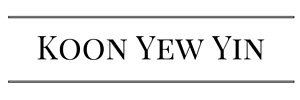Koon Yew Yin 23 April 2022
Russia invaded Ukraine on 24 February. US and NATO countries have been helping Ukraine with military weapons and financial aid to fight Russia. As a result, all the NATO countries have to buy more military weapons from US because US is the largest weapon manufacturer in the world. The US is helping Ukraine under false pretences.
On top of that US and NATO countries imposed economic sanction on Russia and Russia cannot use SWIFT system for any financial transaction.
This is a financial war.
Russia has its SPSF system, and China has the CIPS system as alternatives to SWIFT. The Chinese network is much larger than the Russian system. After banning the Russian central bank from SWIFT, the US has put its most important asset, the US$’s global reserve currency status into the gamble. Putin would not have made his Ukraine move without planning for this US move, which was why he signed the China agreements in early February.
Since Russia’s economy depends on raw material exports, and since we are heading into inflationary times which are like the 1970s, the Russian economy is in good shape to weather higher inflation. There is a natural match between the Russian economy and Chinese economy because China is the largest manufacturing economy in the world.
Europe will be hit VERY HARD by the sanctions because it does not have natural resources, and Russians will buy from China what they used to buy from Europe. This means that the euro will also suffer.
The final outcome of this financial war will be whether the US$ remains as the world’s global reserve currency. Apparently, the US will lose this financial war and what lies ahead for the US is very bleak because all US assets will lose their premium valuations. This will be much worse than a recession.
U.S. inflation hits new 40-year high, jumping 7.9 percent over past year. What is causing the high inflation in the US?
Supply chain issues, surging demand, production costs, and swaths of relief funds all have a role to play, they say, but politics tend to cause one to point the finger at the supply chain or the $1.9 trillion American Rescue Plan Act of 2021 as the main culprits.
Propelled by surging costs for gas, food and housing, consumer inflation jumped 7.9 percent over the past year, the sharpest spike since 1982 and likely only a harbinger of even higher prices to come.
The increase reported recently by the Labour Department reflected the 12 months ending in February and didn’t include most of the oil and gas price increases that followed Russia’s invasion of Ukraine on Feb. 24. Since then, average gas prices nationally have jumped about 62 cents a gallon to $4.32, according to AAA.
Even before the war further accelerated price increases, robust consumer spending, solid pay raises and persistent supply shortages had sent U.S. consumer inflation to its highest level in four decades. What’s more, housing costs, which make up about a third of the government’s consumer price index, have risen sharply, a trend that’s unlikely to reverse anytime soon.
The government’s report also showed that inflation rose 0.8 percent from January to February, up from the 0.6 percent increase from December to January.
For most Americans, inflation is running far ahead of the pay raises that many have received in the past year, making it harder for them to afford necessities like food, gas and rent. As a consequence, inflation has become the top political threat to President Joe Biden and congressional Democrats as the midterm elections draw closer. Small business people say in surveys that it’s their primary economic concern, too.
Seeking to stem the inflation surge, the Federal Reserve is set to raise interest rates several times this year beginning with a modest hike next week. The Fed faces a delicate challenge, though: If it tightens credit too aggressively this year, it risks undercutting the economy and possibly triggering a recession.
